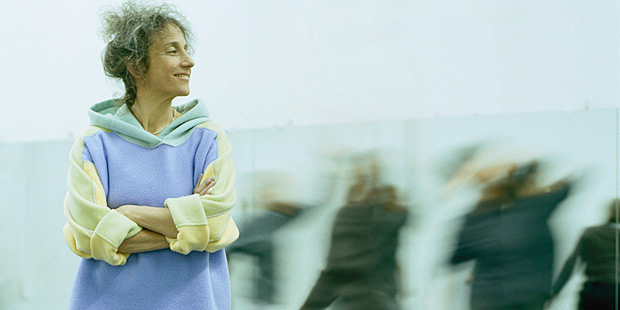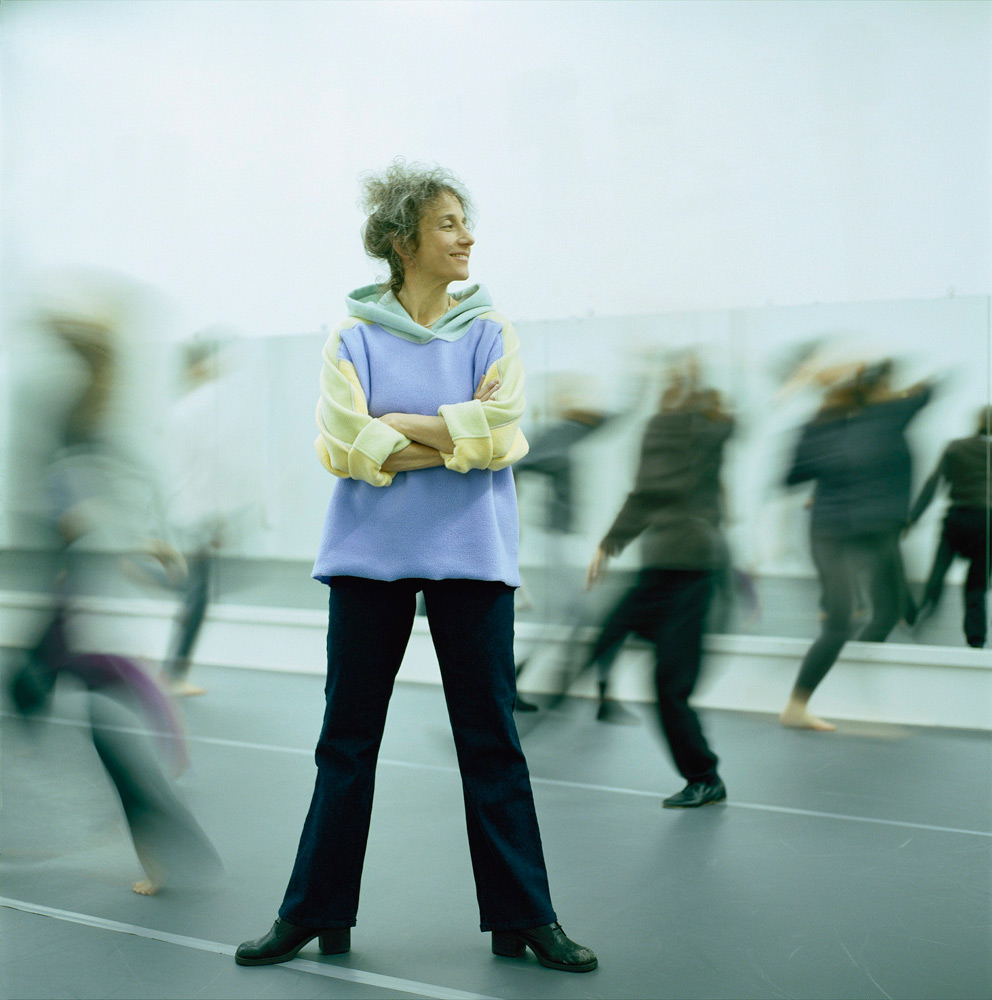
© Lise Metzger. (Click image for larger version)
Liz Lerman lecture: “Finding the Thread, Losing the Plot“
Dance Umbrella Lecture 2017
London, National Theatre
lizlerman.com
www.danceumbrella.co.uk
Liz Lerman is an enlightened performer, writer, educator and speaker. A tiny woman with a quietly formidable presence, her lecture given in the cosy Cottesloe Room at the National Theatre to launch Dance Umbrella was an inspirational manifesto for dance and life. Delivered with warmth and humour in an easy conversational tone, she laid out some rigorous thinking around her creative process; about how dance is a vehicle for insight and human understanding in the world and that through using the right tools and practical applications, it can bring about change. Drawing on her own experience as a Jewish-American choreographer she persuasively demonstrates how she applies her process to unlikely areas of life such as faith, aging, human rights’ law and physics, through anecdotal stories and intellectually probing enquiry. It’s illuminating for performers and audiences alike and an appropriate address to kick start Dance Umbrella with its promising programme of innovative, diverse and community embracing dance.
While I have not seen her work in America, Lerman is best known over here for co-founding the Dance Exchange in Maryland, an organisation for aging dancers, and her popular teaching practice, Critical Response Process, which gives practitioners and choreographers effective methods to work with feedback. Her commitment to making dance in community settings is inspirational and of massive importance to her role as a socially responsible artist. This has enabled her to collaborate or build networks with institutions such as Harvard, Yale School of Drama, Guildhall School of Music and Drama, hospitals, prisons, human rights’ organisations as well as exploring connections between art and science. Recent informative collaborations include those with a particle physicist and a neuro biologist. She has also written several books on her teaching practice and choreographic process but bases much of her talk, Finding the Thread, Losing the Plot on her third publication Hiking the Horizontal: Field Notes from a choreographer (2011).
In conversation with Steven Hoggett (co-founder of Frantic Assembly) Lerman structures her lecture loosely into three chapters, encompassing ideas that she has been thinking about recently: choreographic knowledge, artistic accountability and dismantling hierarchies. Her most important agenda is the need to create a “horizontal focus in a hierarchical world” to eliminate unhelpful polarities: for example, aging people should not be on the opposite axis to artistic rigor and solo work should not be positioned below or above collaborative work. Her horizontal utopia encourages an expansive scope which positions, for example, craft, structure, and inspiration that brings theatrical works to life alongside genetics, human rights, politics, spirituality. On this line she also places her choreographic tools learnt from ballet, Graham, Cunningham, postmodern dance with those of being a mother.

© Lise Metzger. (Click image for larger version)
Lerman reflects on the value of choreographic knowledge and much of what she says reminds me of the goals of the early American postmodern dance pioneers – the Judson Church group. For example the importance of making and performing work outside of ‘concert halls’ to allow for immersion into non-theatrical environments; changing the canon, by dissolving barriers between art and life. Examples drawn from her practice include making work that can be performed in her synagogue or a theatre, or giving as much importance to her role as choreographer in residence of a children’s hospital as director of a professional dance company.
She ponders over the responsibility of being an artist, how to embrace differences. In reference to a project which took place in a Shipyard, she mentions how she established common ground with the people in this particular community, working with them for a year and half, listening to and using their stories, then enabling them to communicate their lived experiences through movement skills.
Lerman is a fascinating mixture of sharp thinker, eloquent story-teller and therapeutic teacher. Even when she questions the part we all play in supporting destructive belief systems and soberly asks us whether we are resistant or complicit in them, she talks without judgement or anger. Drawing on her own concerns that she might have been responsible for Donald Trump being in power, she extols the need to rectify this by being ambiguous and porous as an artist and educator rather than didactic and impermeable. The need to dissolve boundaries and open borders is particularly pertinent in the light of Brexit and Trump. She suggests the use of movement skills to assemble knowledge in order to challenge negative assumptions and wrong, hierarchical values; and the importance of working physically with people who are suffering or depressed as a result of such negative belief systems. Could dance be used to heal the victims of the Las Vegas shooting massacre, or to address the alienation of the black community?
Her final sharing of ideas return to the horizontal embrace and she uses the image of dots and lines drawn between them to suggest how structural problems may be fixed e.g. how to reshape an institution, or break the (hierarchical) shape of what happens in rehearsal between a director and the performer. She is undoubtedly a fixer, maybe of the postmodern kind who takes things apart then puts them back together in different combinations.
As she proposes the value of shape and momentum, the horizontal embrace, alternative systems, the human body and participation as tools that we can take away from the dance studio and into the world, I decide that she should be elected as the new president – if not for the US, certainly for dance.

















You must be logged in to post a comment.